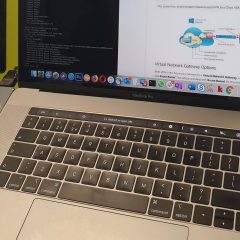macOS – Editing the Hosts File
KB ID 0001268 Another guest post from Daniel Newton Problem I’ve had windows for years; I knew the OS inside out. Recently, I switched to Mac. But I wondered how to edit the hosts file for my VPN connections and my servers. After some research, I found out how to do it and thought I will document it on PeteNetLive! 🙂 Solution Open a terminal session and type in the following command; Sudo nano /etc/hosts Note: I’m using nano for this...
GNS3 – Initial Setup, Adding Routers, Hosts, and ASA Firewalls
KB ID 0000927 NOTE: THIS ARTICLE IS FOR THE OLD VERSION OF GNS3 GO HERE FOR THE NEW ONE Problem I dip into GNS3 every so often, (depending on what I’m working on). And each time I install it, I spend just as long remembering how to set it up, as I do using it! So, if for no other reason than I can use this page as a reference in future, here’s how to get it up and running. Solution Note: At time of writing he latest...
GNS3 – Initial Setup, Adding Routers, Hosts, and ASA Firewalls
KB ID 0001079 Problem I dip into GNS3 every so often, (depending on what I’m working on). And each time I install it, I spend just as long remembering how to set it up, as I do using it! So, if for no other reason than I can use this page as a reference in future, here’s how to get it up and running.</p? Solution Note: At time of writing the latest version is 1.3.6</p? 1. Download GNS3, I usually accept all the...



